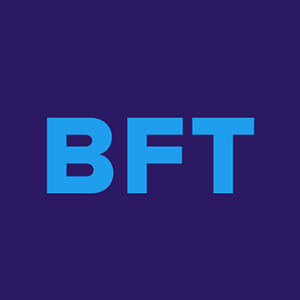How the Art of Storylistening Helps You Tell a Stronger Story

July 5, 2022 2 min read
As an agency that specializes in industries that tend to be very technical, we are sometimes asked how we can capture the right voice of our clients since we are not ingrained in their daily operations and culture. That’s a fair question – and a challenge we relish.
We’re all familiar with storytelling and storysharing. But Storylistening is just as important. This is certainly not a new topic, as there are many articles and studies that cover it.
While there’s no one right way to do it, we’ve finessed our method of storylistening into an approach that grounds our thinking and ensures we do our best to capture your voice, style, and what sets your business apart.
Storylistening the BFT Way
Obviously, listening is the primary underpinning of being able to dig in and home in on the elements that will drive the story. What you may not realize is everything that goes into that listening.
Listen for the what. What excites and what frustrates.
Listen for the pitch and inflection. Where and when the highs and lows in the speaking occur.
Listen for the tone. Is there a certain dialect or word choice that defines you?
Listen for the how. Does a certain approach or style make a regular appearance – direct, flowery, casual, strictly professional, etc.
Listen for the why. Why you do what you do and why you find certain things interesting, irrelevant, or boring.
Listen for the explanation. How you break things down and bring clarity to complex topics is important – do you use examples, metaphors, quotes?
A Proactive Dimension of Storylistening: Questioning that Illuminates
Storylistening grew out of an academic model in which listening to a story is the primary engine driving students to build comprehension and vocabulary. But the instructor also ventures into actively engaging students with questions that encourage them to pause and synthesize core truths about the story. The questions are asked in the language of the story and the dialect of the students.
And that’s how “listening” is different at Blue Flame Thinking. Our subject matter experts have deep experience in financial services, investing, engineered products, and manufacturing. They understand the stories clients are telling, and know how to listen for key competitive differentiators and strengths. They’ll use well-informed questioning to reveal how you can tell a much stronger story.
Things You Can Do to Help Create Stronger Stories
- Tell your agency partner your story from the viewpoint of your customers and prospects. What do they need to understand about your business to believe you can help them succeed?
- Be sure your agency partner understands the steps in your selling process, and what proof you need to offer at every stage to keep the process moving.
- Be very clear about defining the strengths that set your business apart and help you close sales. At the same time, be fearless about articulating your weaknesses.
- Share whatever knowledge you can about awareness and comprehension of your brand in your markets, and how often you proactively engage in outreach. Sometimes the real problem isn’t a story that needs refining; you may simply need to tell it more often.
There’s no single answer to what messaging will resonate with each audience you’re engaging with. That’s why testing and optimizing is critical. But better storylistening can lead to better preparation of audience/story point matrixes, proof points, and voice elements – leading to storytelling that feels more genuine, true to the brand, and relevant to your audiences.





